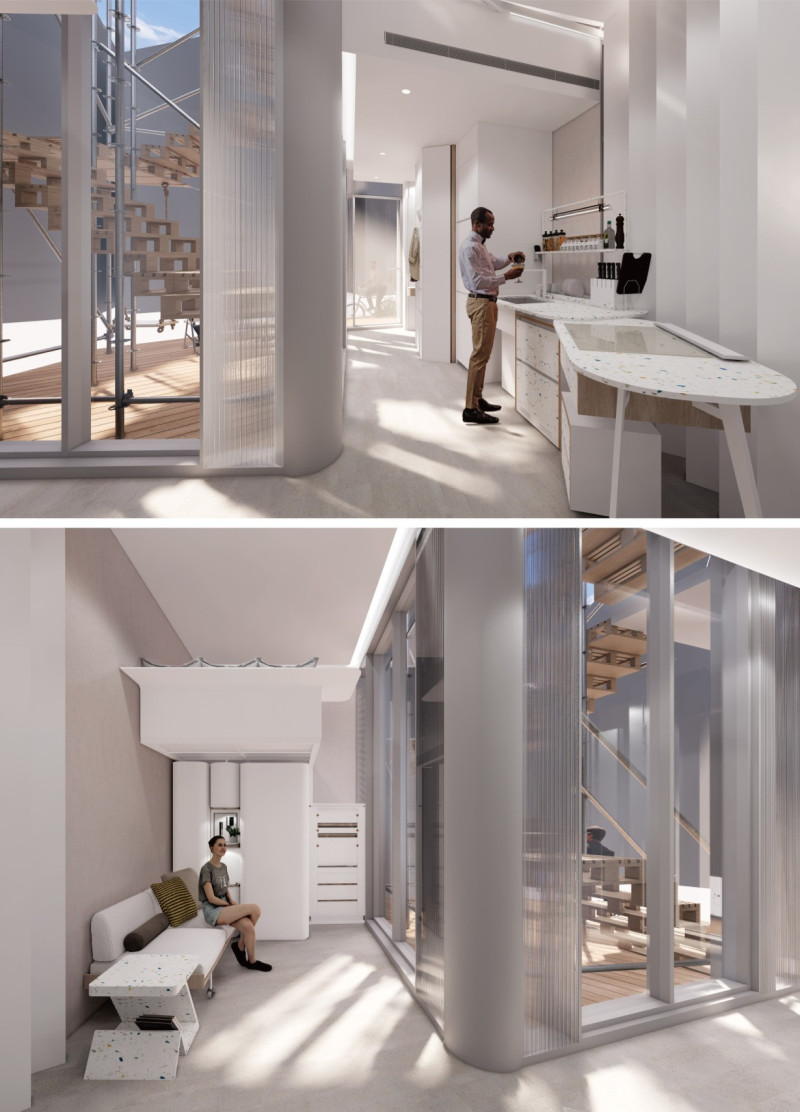5 key facts about this project
At its core, the project represents a synthesis of modern architectural practices and a respect for local heritage. It is designed to accommodate [insert primary function, such as residential living, community engagement, or commercial activities], ensuring that the space is not only functional but also promotes social interaction and engagement. The thoughtful integration of both private and communal areas encourages a lifestyle that prioritizes connection among individuals while still providing personal sanctuary.
The architectural design effectively utilizes an open floor plan that enhances spatial fluidity. Key areas within the building are interconnected, allowing for smooth transitions between spaces. This flow is bolstered by ample natural light, courtesy of large, strategically positioned windows and glass facades, which also facilitate views of the surrounding landscape. These design choices highlight the project's emphasis on creating an indoor environment that is both vibrant and inviting.
Materiality plays a significant role in establishing the character of the project. The use of reinforced concrete provides a robust structural foundation, while extensive glazing allows for transparency and a connection to the outdoors. The incorporation of sustainable materials, such as bamboo for interior finishes, not only adds a layer of warmth but also aligns with the project's commitment to environmentally conscious design. The facade, characterized by locally sourced stone, establishes a tactile relationship with the landscape, deepening the architectural narrative.
Unique design approaches are evidenced throughout the project. Innovative features, such as green roofs and integrated rainwater harvesting systems, exemplify a forward-thinking attitude towards sustainability. These elements are not merely decorative; they serve essential functions, enhancing the building's efficiency and resilience while promoting biodiversity in the urban environment. The exterior spaces are just as carefully considered as the interior, with landscaped terraces and gardens that offer additional zones for social interaction and relaxation.
Furthermore, the project takes full advantage of the local climate. Passive solar design strategies have been employed to maximize energy efficiency, such as optimizing for natural ventilation and thermal mass, which are integral in maintaining comfortable interior conditions year-round. This climate responsiveness contributes not only to the project's sustainability goals but also enhances the overall user experience.
In essence, this architectural project stands as a testament to thoughtful design that is rooted in context, sustainability, and user-oriented considerations. Its unique blend of materiality, innovative features, and seamless integration with the environment positions it as a relevant contribution to contemporary architecture. For those interested in gaining deeper insights into the architectural plans, sections, designs, and ideas, a more comprehensive exploration of the project presentation is encouraged. Engaging with these elements provides a fuller understanding of how this project effectively marries functionality with architectural integrity.


























